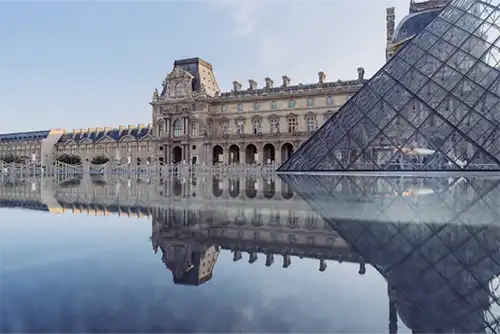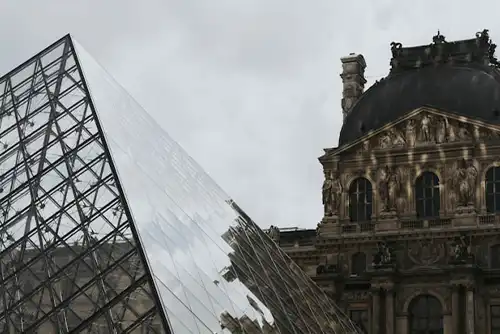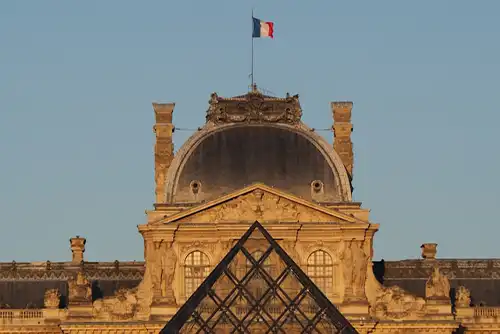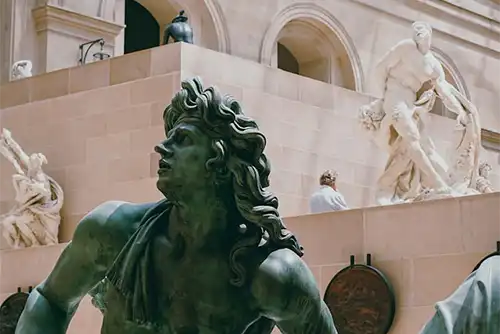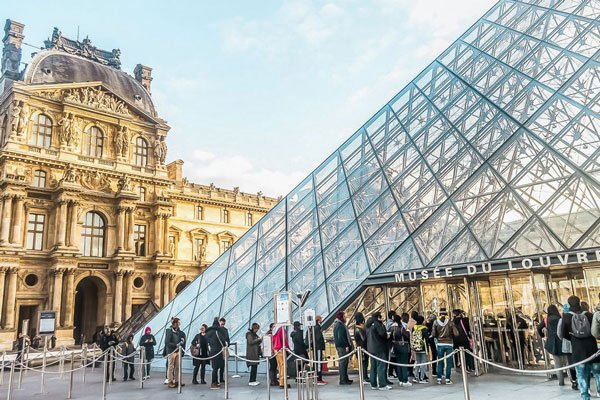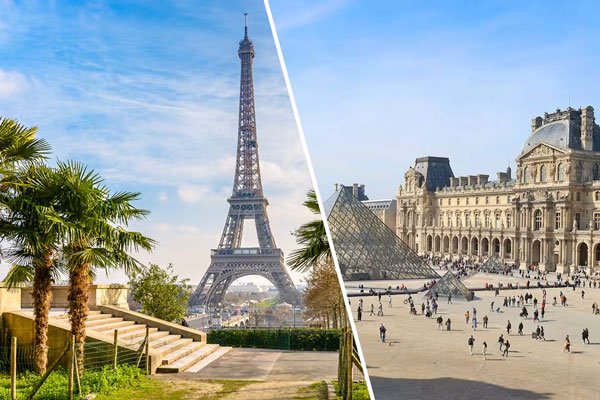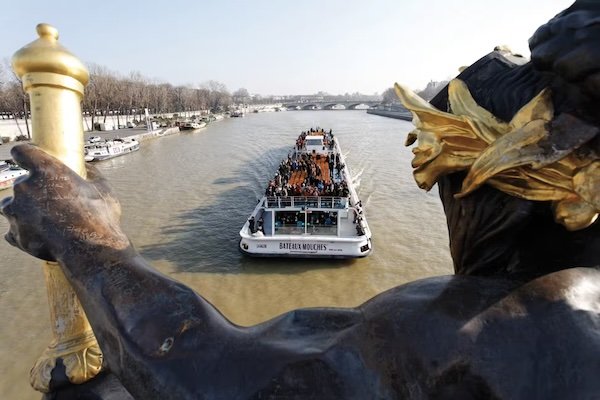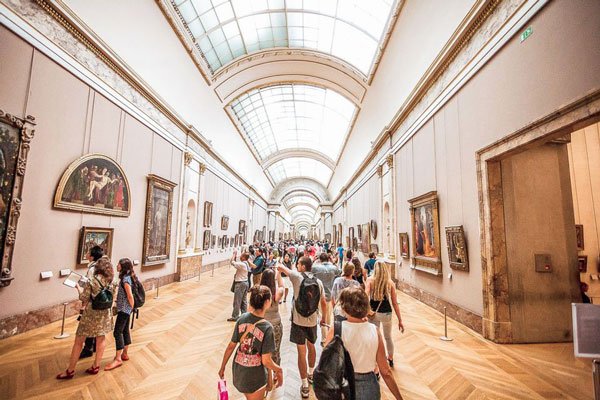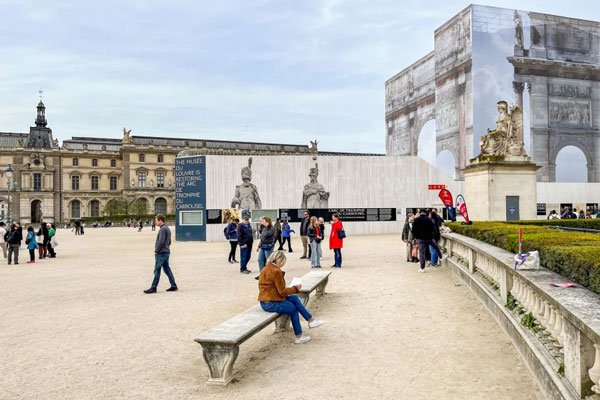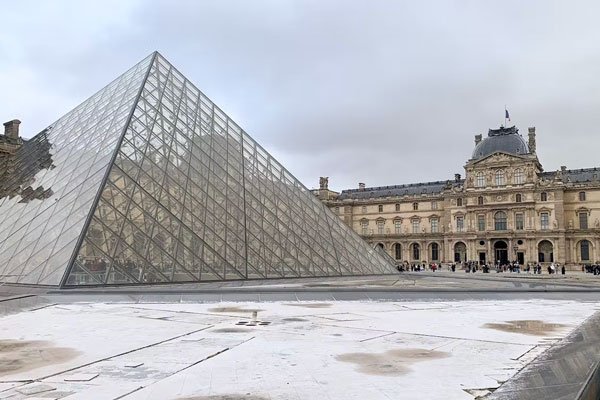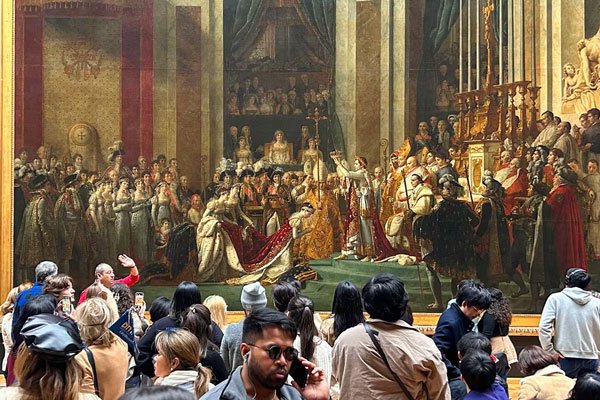History of the Louvre Museum
History of the Louvre Museum
Travel through time and immerse yourself in the splendor of the Musée du Louvre, a landmark that has captivated visitors for centuries. Founded in 1793, the museum houses an unparalleled collection of over 350,000 works of art, of which around 35,000 are on display, spanning over 780,000 square feet of exhibition space.
Delve into the rich history of the Louvre Museum, tracing its origins from a medieval fortress to its transformation into a world-renowned museum. Begin with a chronological timeline, followed by an in-depth overview and insights into the architectural marvels that adorn its grounds, from the iconic glass pyramid to the majestic Cour Carrée.
History of the Louvre Museum: Chronological Timeline
1190
King Philippe Auguste begins construction of a fortress on the site of the present-day Louvre Museum. The fortress is intended to defend Paris from attack.
1316
King Philip VI of France expands the Louvre fortress, adding towers and walls.
1364
King Charles V transforms the Louvre fortress into a royal palace. The palace becomes the primary residence of the French monarchy.
1536
King Francis I commissions the construction of the Cour Carree, a large courtyard in front of the Louvre palace. The courtyard is designed to create a more spacious and impressive entrance to the palace. Then he initiates the work on the Grande Galerie, a long gallery that stretches along the Seine River. The gallery is designed to house the king’s growing collection of art.
1592
King Henry IV annexes the Tuileries Palace, which is situated next to the Louvre.
1656
King Louis XIV commissions the construction of the Colonnade du Louvre, a long colonnade that links the Louvre palace to the Tuileries Palace. The colonnade is designed to create a unified architectural ensemble.
1720
King Louis XV initiates the construction of the Salle des Caryatides, a large gallery within the Louvre palace. The gallery is decorated with sculptures of female figures supporting the ceiling.
1750
The Louvre’s collection is further expanded with the acquisition of the Campana Collection, a vast collection of artifacts from ancient civilizations.
1793
Following the French Revolution, the Louvre is officially opened to the public as a museum. The collection is divided into eight departments: Egyptian Antiquities, Greek and Roman Antiquities, Near Eastern Antiquities, Medieval Sculpture, Decorative Arts, Paintings, Prints and Drawings, and Islamic Art.
1797
The Louvre acquires Da Vinci’s Mona Lisa, one of the most famous painting in the world, and Venus de Milo, a renowned ancient Greek sculpture.
1801
Napoleon Bonaparte becomes emperor of France and expands the Louvre’s collection with art looted from conquered territories, including the Venus de Milo and the Winged Victory of Samothrace.
1803
Napoleon Bonaparte significantly expands the Louvre’s collection by acquiring around 5.000 artworks from conquered territories across Europe including a large collection from the Italian Borghese family, further enhancing its prestige.
1815
After Napoleon’s defeat at Waterloo, many of the looted artworks are returned to their original owners. However, the Louvre’s collection remains one of the largest and most prestigious in the world.
1850
King Louis-Philippe initiates the construction of the Pavillon de Flore, a large pavilion that extends the Louvre palace towards the Tuileries Palace. The pavilion is designed to create a more symmetrical and imposing facade for the palace.
1852
Napoleon III resumes the expansion of the Louvre, commissioning the construction of the Cour Napoléon, a large courtyard in front of the Grande Galerie. The courtyard is designed to accommodate the growing number of visitors to the museum.
1870
During the Franco-Prussian War, the Tuileries Palace, which is adjacent to the Louvre, is burned down. The destruction of the palace opens up a new vista for the Louvre and creates a more open and inviting space for visitors.
1872
The Cour Napoleon is extended to accommodate the growing number of visitors to the Louvre. The extension is designed to create a more spacious and welcoming space for visitors.
1907
The Louvre’s collection is further expanded with the acquisition of the Rothschild Bequest, a large collection of Impressionist and Post-Impressionist paintings. The Rothschild Bequest includes masterpieces by Claude Monet, Pierre-Auguste Renoir, and Vincent van Gogh.
1911
The Mona Lisa, one of the most famous paintings in the world, is stolen from the Louvre by Vincenzo Peruggia, an Italian employee of the museum. The painting is recovered two years later and returned to the Louvre.
1914–1918
During World War I, the Louvre is closed to the public and its collection is placed in storage to protect it from the threat of aerial bombardment.
1939–1945
During World War II, the Louvre is closed to the public once again and its collection is evacuated to safe locations in France and Britain to protect it from the threat of Nazi looting. However, occupying Nazi forces steal many remaining works and transport them to Germany. After the end of the war, the evacuated artworks are returned to the Louvre, some of the stolen, too.
1946
In the aftermath of the war, the evacuated artworks are returned to Louvre. The Monuments Men, a team of art experts, undertake the challenging task of recovering looted artworks. They successfully reclaim some works from the Louvre. However, others remain unaccounted for, with an uncertain fate, and the possibility that they may never be found.
1989
The Louvre’s iconic landmark, I.M. Pei’s glass pyramid, is inaugurated as the new main entrance to the museum. The pyramid is designed to provide a modern and welcoming entrance to the museum and to improve circulation within the museum’s complex layout.
2003
The Louvre launches a major renovation project to modernize its facilities and improve visitor services. The renovation project includes the creation of new exhibition spaces, the installation of new multimedia technologies, and the development of new educational programs.
2012
The Louvre’s collection is further expanded with the acquisition of the Léonardo da Vinci’s Salvator Mundi painting. The painting is sold for a record-breaking $450 million, becoming the most expensive artwork ever sold at auction.
2019
The Louvre unveils its ambitious Grand Louvre project, a plan to further expand the museum and create a more unified and integrated visitor experience. The project includes the construction of new exhibition spaces, the development of new educational programs, and the creation of new public spaces.
Present Day
The Louvre continues to be a major cultural attraction, with millions of visitors from around the world coming to see its vast collection of artworks.
History of the Louvre Museum: In-Depth Summary
Delve into the rich history of Louvre Museum with our in-depth overview. Immerse yourself in each intricately presented segment, journeying through time to unveil the origins, transformations, and profound cultural significance of this iconic building that was transformed from a royal residential palace into perhaps the most famous museum worldwide.
Here is a periodic overview of the history of the Louvre Museum:
Architecture of Musée du Louvre
The Louvre’s architectural evolution spans nearly 800 years, marked by various construction phases and interruptions. In 1190, initiated by Philip II, a castle construction began, completing around 1200, surrounded by a four-wing wall with round towers. Charles V embellished and rebuilt the Louvre from 1370, showcasing a fortified structure with Gothic elements.
The Renaissance prompted extensive expansion from 1528, led by Pierre Lescot, transforming the old keep into a Renaissance-style palace. Over the next century, continuous construction under Henry II resulted in a four-wing complex. The south wing (1559-1594) and the creation of a gallery connecting to the Tuileries Palace (1566-1608) occurred under Henry IV. Louis XIII commissioned Lemercier for renovations, adding pavilions, while Louis XIV revamped the south wing’s facade.
The strict Baroque-Classicism style employed at this stage became influential in subsequent eras of French architecture. Work on the Louvre initially ceased in 1674. In the 19th century, extension buildings, named after Denon and Richelieu, were revamped by Louis Visconti and Hector Lefuel from 1852 to 1878, along with the northern connecting wing to the Tuileries in 1816. The Tuileries Palace was destroyed by fire during the Paris Commune in 1871 and demolished in 1882.
From then on, the castle essentially formed a vast, U-shaped complex, anchored by the four-wing Old Louvre with the Cour Carrée, from which newer wings extend around the large Cour Napoléon to the Arc de Triomphe du Carrousel. In 1989, architect Ieoh Ming Pei added a glass pyramid in the inner courtyard, serving as the Musée du Louvre’s main entrance.
Louvre Museum Tickets and Tours
Discover our curated selection of Musée du Louvre tickets and guided tours.





